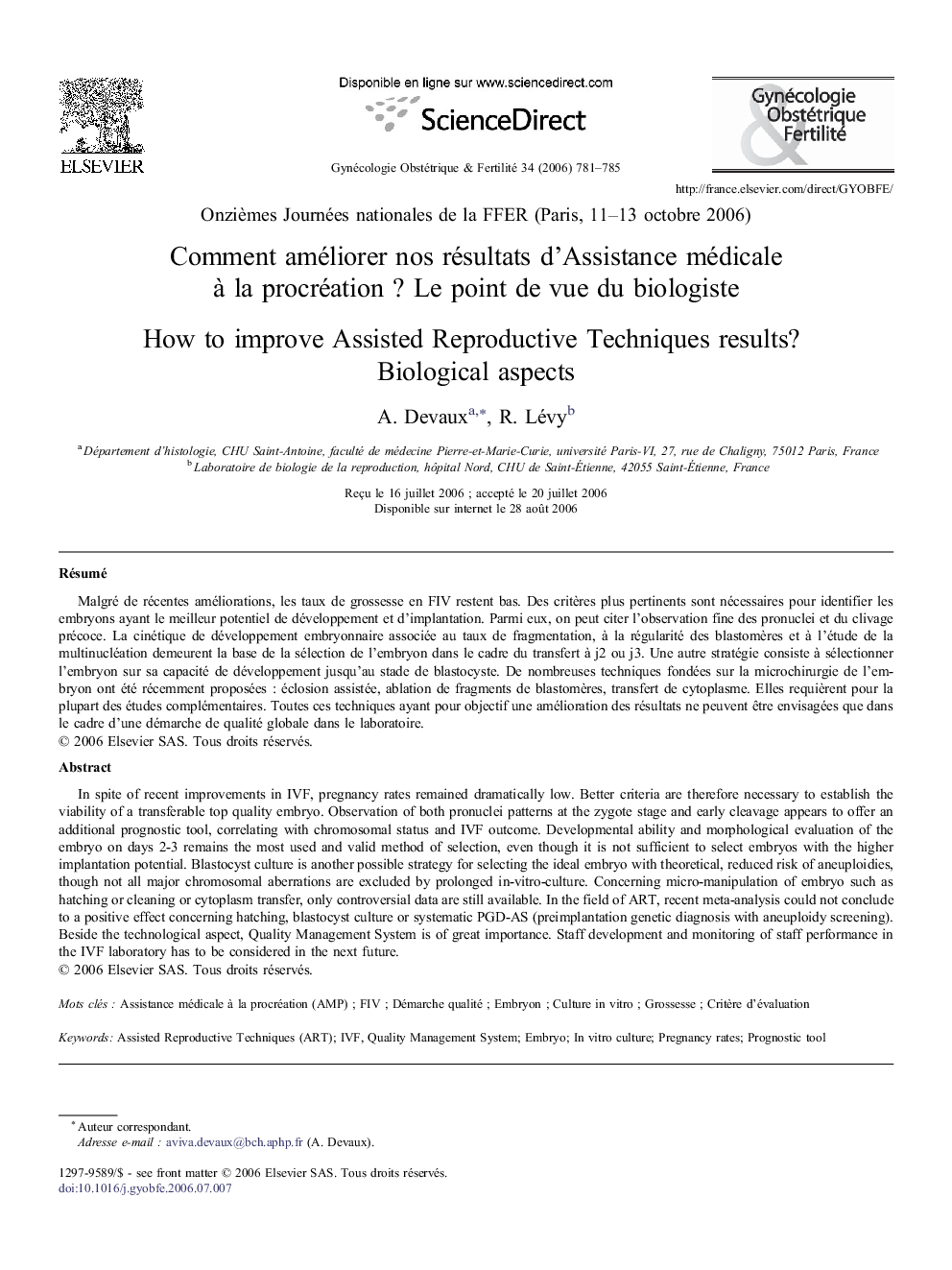| کد مقاله | کد نشریه | سال انتشار | مقاله انگلیسی | نسخه تمام متن |
|---|---|---|---|---|
| 3950873 | 1254813 | 2006 | 5 صفحه PDF | دانلود رایگان |

RésuméMalgré de récentes améliorations, les taux de grossesse en FIV restent bas. Des critères plus pertinents sont nécessaires pour identifier les embryons ayant le meilleur potentiel de développement et d'implantation. Parmi eux, on peut citer l'observation fine des pronuclei et du clivage précoce. La cinétique de développement embryonnaire associée au taux de fragmentation, à la régularité des blastomères et à l'étude de la multinucléation demeurent la base de la sélection de l'embryon dans le cadre du transfert à j2 ou j3. Une autre stratégie consiste à sélectionner l'embryon sur sa capacité de développement jusqu'au stade de blastocyste. De nombreuses techniques fondées sur la microchirurgie de l'embryon ont été récemment proposées : éclosion assistée, ablation de fragments de blastomères, transfert de cytoplasme. Elles requièrent pour la plupart des études complémentaires. Toutes ces techniques ayant pour objectif une amélioration des résultats ne peuvent être envisagées que dans le cadre d'une démarche de qualité globale dans le laboratoire.
In spite of recent improvements in IVF, pregnancy rates remained dramatically low. Better criteria are therefore necessary to establish the viability of a transferable top quality embryo. Observation of both pronuclei patterns at the zygote stage and early cleavage appears to offer an additional prognostic tool, correlating with chromosomal status and IVF outcome. Developmental ability and morphological evaluation of the embryo on days 2-3 remains the most used and valid method of selection, even though it is not sufficient to select embryos with the higher implantation potential. Blastocyst culture is another possible strategy for selecting the ideal embryo with theoretical, reduced risk of aneuploidies, though not all major chromosomal aberrations are excluded by prolonged in-vitro-culture. Concerning micro-manipulation of embryo such as hatching or cleaning or cytoplasm transfer, only controversial data are still available. In the field of ART, recent meta-analysis could not conclude to a positive effect concerning hatching, blastocyst culture or systematic PGD-AS (preimplantation genetic diagnosis with aneuploidy screening). Beside the technological aspect, Quality Management System is of great importance. Staff development and monitoring of staff performance in the IVF laboratory has to be considered in the next future.
Journal: Gynécologie Obstétrique & Fertilité - Volume 34, Issue 9, September 2006, Pages 781–785